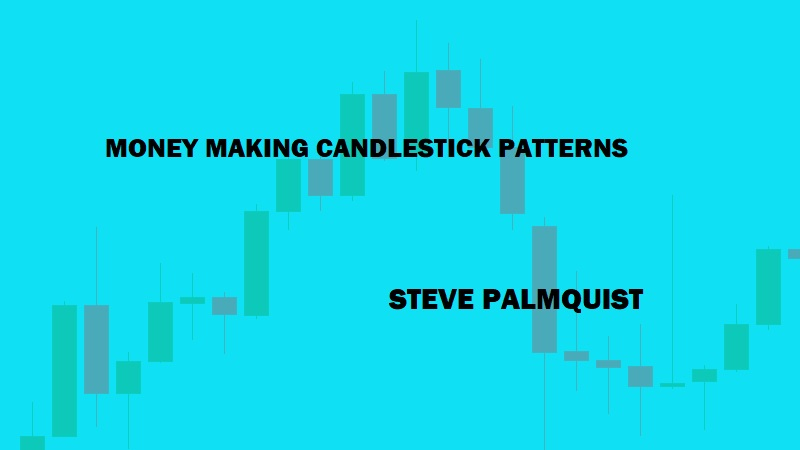Step by Step Testing Pattern : Analyzing the Results
Stages of Testing pattern, Analyzing the results,
Course: [ MONEY MAKING CANDLESTICK PATTERNS : Chapter 7: Evening Star Patterns ]

If you remember, the first step we took to gain a better understanding of the morning star pattern was to look at the results of testing the pattern with several variations of the definition in the requirements for the third day.
TESTING THE THIRD DAY
If
you remember, the first step we took to gain a better understanding of the
morning star pattern was to look at the results of testing the pattern with
several variations of the definition in the requirements for the third day.
Using that as our starting point, I reviewed a number of the initial testing
charts and noticed many of the evening star patterns had third days much lower
than the first day of the pattern. I call these “low3”
and an example is shown in Figure 7.4.
FIGURE 7.4: LOW3 EVENING STAR IN TNH ON
04/10/ 07

LOW3 TEST
Figure 7.4 shows that TNH was in an uptrend
and formed a large white body on 04/05, followed by a gap up with a small body,
which then was followed by a black body that closed below the midpoint of the
first day of the pattern. It is a low3 because the third day of this pattern
closed well below the first day of the pattern, which is within the definition
of most evening stars but not the type of example that is shown in most texts.
Since
the low3 style of evening star looks different than what is usually shown for a
evening star pattern, I tested to see what the effect would be of requiring
that day three have a close greater than the low of the first day of the
pattern. This requirement resulted in patterns that looked more like what you
often see in books and magazines, but it actually hurt the annualized ROI
numbers. It appears better to allow the bar of the third day of the pattern to
extend below the bar of the first day.
Results
can be improved by requiring that the third day of the pattern have a body
length that is the largest body length in the last five days. An example of
this type of pattern is shown in Figure 7.5, where TIE showed an evening star
with a long body on the third day of the pattern. During the next few days
after the evening star formed, TIE dropped about 17%, leading to a nice profit
for short positions.
FIGURE 7.5: LONG DAY 3 BODY EVENING STAR IN TIE
ON 05/12/06

Taking
only long-bodied evening stars during the 01/03/06 to 05/01/07 test period
resulted in improved annualized ROI and the percentage of winning trades. This
variation in the requirements for the third day of the evening star pattern did
not improve results enough to beat buy and hold, but perhaps when combined with
other parameter changes, this could result in a more interesting trading pattern.
GAPS
A
number of traders feel the evening star pattern is stronger if the third day of
the three day pattern opens with a gap down. Adding a filter requiring the open
on the third to be less than the close of the second day of the pattern
resulted in a small increase in ROI from negative 18% to negative 15.7%, and
left the winning trade percentage about the same. Neither of these results is
significant enough to warrant changing the basic pattern parameters of the
evening star trading pattern.
The
gap tested is a basic gap in which the open is lower than the previous day’s
close. This type of gap is relatively common, and, as we have seen, is not
helpful in terms of improving the trading results of the evening star pattern.
When the gap is larger and the high falls below the low of the previous day’s
trading, it forms a “white space” on the chart and is much more visible than
the typical gap. An example of a “white space gap” is
shown in Figure 7.6.
FIGURE 7.6: WHITE SPACE GAP ON DAY 3 OF
EVENING STAR IN BTU ON 02/07/06

In
Figure 7.6, BTU has been in an uptrend and
forms an evening star pattern, which completes on 02/07/06. The third day of
the evening star pattern starts with a strong gap down, and BTU opens below the
close of the previous day. When a stock opens below the previous day’s low, it
results in a “white space gap.”
Only
taking evening star patterns with white space gaps on the third day of the
pattern during the 01/03/06 to 05/01/07 test period, results in 312 trades
showing an annualized ROI of slightly less than 8%; and more than 51% winning
trades as shown in Figure 7.7. These results
are not strong enough to use the pattern for trading, but do indicate the power
of white space gaps of the third day since this is the first parameter change
that has resulted in a positive annualized ROI.
FIGURE7.7: TSET RESULTS FOR WHITE SPACE GAP
ON DAY 3 EVENING STARS

TESTING THE SECOND DAY
WHITE SPACE GAPS
One
might think that if a white space gap on day three of the pattern helped the
trading results more than anything else so far, then perhaps using a white
space gap on day two instead of just a simple gap would also improve results. Figure 7.8 shows the test results for trading only
evening star patterns with white space gaps on day two of the pattern. This
parameter change resulted in significantly fewer trades and a larger annualized
ROI loss than the basic definition with which we started. Our testing showed
that white space gaps improve results when they occur on day three of the
pattern and reduce results when they occur on day two of the pattern.
FIGURE 7.8: TEST RESULTS FOR WHITE SPACE GAP
ON DAY 2 EVENING STARS

If
the requirement that day two of the pattern show a gap up is eliminated, the
test results were similar to the initial evening star test results shown in Figure 7.3, with the exception that, as expected,
a lot more trades occurred. In this particular test period, it appears a gap on
the third day of the pattern is more important than a gap on the first day, and
a white space gap on the third day is more powerful that just a simple gap.
In
addition to the requirement for a gap up, the basic definition of the evening
star pattern requires a small body on day two, and allows it to be either black
or white. Testing the performance of the evening star pattern with variations
in these parameters will help us to understand how important they are.
BODY SIZE
Most
of the literature on evening star patterns does not attach a specific
definition to “small” body size on day two of the pattern. The basic definition
for a small body on day two used for the results in Figure
7.3 was the body size must be less than 60% of the day one body size. Table 7.1 indicated the test results were similar
for body sizes 40% or more of the first day’s body size. The results made an
obvious improvement when the requirement was changed to 30% or less.
TABLE 7.1 EFFECT OF DAY 2 BODY SIZE ON EVENING
STAR TEST RESULTS 01/03/06 TO 05/01/07
Remember,
there are a number of different issues that can cause effects in backtesting
results. This is why I am not interested in changing a parameter unless there
is a clear difference in using it. In the first five lines of Table 7.1, the annualized ROI results only vary by
about 4%. The effects of time frames, database quality, slippage, etc., can
also account for a few percentage points difference. When the body size for day
two drops to 30% or less of the day one body size, the annualized ROI loss is
halved; that kind of result is something worth listening to.
Since
changing the definition of “small body” on
day two of the pattern to less than 30% of the day one body size cuts the
annualized ROI loss in half and still results in over 1,700 trades during the
01/03/06 to 05/01/07 test period, I will be incorporating this into the
standard definition and using it in subsequent tests. I have not yet
incorporated the requirement for a day three white space gap down into the
definition because it significantly reduced the number of trades.
BODY COLOR
The
other parameter of the second day is that the body color does not matter; it
can be either black or white. This idea was tested by adding a filter to the
evening star definition that resulted in only taking trades when the body on
the second day of the pattern was white. The results were interesting because
the annualized ROI loss dropped from minus 18% to slightly under minus 6%. This
effect also held up when testing in the longer time frame of 01/02/04 to
05/01/07.
I
noticed an interesting effect when testing white body candlesticks on day two
of the pattern that may affect some traders. When charting programs draw
candlesticks, the horizontal lines used to draw the top and bottom of the
candlestick body have a width. Because of the width of these lines, some very
small body candlestick patterns appear to be black body candlesticks due to the
very small amount of white space in the body of the candlestick. This is
something worth keeping in mind.
As
an example, Figure 7.9 shows an evening star
pattern that occurred in ESL on 05/08/06, where the third day of the pattern is
marked by an up arrow. The second day appears to be a black body in the chart.
Closer inspection reveals that the open was 45.88 and the close was 46.28,
indicating the stock had an up day and a white candlestick. The candlestick
just appears to be black because the white space between the open and close is
small compared to the line width used to draw the top and bottom parts of the
candlestick body. This should not be an issue when using a computer scan to
find the pattern, but it can lead traders to skip over some white-bodied
candlesticks when visually scanning charts.
FIGURE 7.9: EVENING STAR IN ESL ON 05/08/06

TESTING THE FIRST DAY - WHAT IS BIG
The
first day of the evening star pattern has the simplest definition; it just has
to be a “big” black candlestick. The
definition of a black candlestick is unambiguous. The definition of “big”
leaves room for traders to interpret the word differently and thus trade
different patterns. In order to get a better idea of what definition to use,
the test was run several times using various definitions for “big,” with the results listed in Table 7.2.
TABLE 7.2 EFFECT OF DAY 1 BODY SIZE ON EVENING
STAR TEST RESULTS 01/03/06 TO 05/01/07
To
get the results for Table 7.2, the test was
run six times during 01/03/06 to 05/01/07. The first line shows the results for
taking all evening star trades during the period when the first day had a
larger body than the previous day. The second line shows the results for
evening star patterns whose first day body was larger than the bodies on the
two previous days and so on to the last line, where the first day of the
evening star pattern was required to have a body larger than any of the
previous six days.
The
third line in Table 7.2 has the best
results, and in fact turns a losing system into a winning percentage. The 3%
gain is still below the 14% annualized ROI for buy and hold, so this is not yet
a pattern I would focus on trading, but we are definitely beginning to
understand how to define the different parameters in the pattern.
Based
on the results of Table 7.2, I altered the
parameters of the first day of the evening star pattern to require that the
black body of the first day be larger than any body of the three previous
candlesticks. An example of what this looks like is shown in Figure 7.10, in
which an evening star pattern appeared in RGLD on 12/29/06. Note that the body
on the first day of the three day pattern was the largest body in the last
three days.
FIGURE 7.10: THREE DAY WIDE RANGE EVENING STAR
IN RGLD ON 12/29/06

ANALYZING THE RESULTS
The
testing of the evening star pattern to this point has indicated it performs
better when two modifications are made to the basic definition. These are 1) the
body of the first day is the largest body in the last three days, and 2) the
second day’s body is less than 30% of the first day’s body. Running the evening
star test during the 01/03/06 to 05/01/07 period using this modified definition
yielded the results shown in Figure 7.11.
FIGURE 7.11: RESULTS OF MODIFIED EVENING STAR
DURING 01/03/06 TO 05/01/07

We
also determined that white space gaps on the third day of the pattern were one
of the stronger parameter changes, but significantly reduced the number of
trades. Adding that requirement to the modified definition results in the
interesting results of Figure 7.12. This is
the first set of parameters that shows an annualized ROI above buy and hold
with a percentage of winning trades above break even.
FIGURE 7.12: TEST RESULTS OF MODIFIED EVENING
STAR WITH DAY 3 WHITE SPACE GAP

The
results of Figure 7.12 look interesting. The
issue is that only 106 trades were produced during the test period, so the
results may not be specific to the test period. The results of testing the
modified definition with white space gaps on day three in other test periods is
shown in Table 7.3.
TABLE 7.3 MODIFIED PATTERN WITH DAY 3 WHITE
SPACE TEST RESULTS IN VARIOUS TIME PERIODS
Table 7.3 indicates that the modified pattern
with day three white space gaps consistently generates 40 to 50 trades a year.
It is good that the pattern generates about the same number of trades every
year. Systems that generate a bunch of trades in one time period and none in
another may be suspect. The problem with this modification to the evening star
pattern is since it only generates a few trades every year, it is difficult to
add additional filters to investigate further the reasons for these results.
The
results of using the pattern beat buy and hold annualized ROI in recent times,
and start to fall behind in longer time periods. It may be that the market
conditions themselves have a stronger effect on evening star pattern results
than variations in the pattern definition. Since strong bull and bear periods
typically last for months not years, it is problematic to test this pattern in
a number of bull and bear cycles and still obtain enough trades in each cycle
to be significant.
Backtesting
has provided us with insights into the pattern, but there are reasonable limits
to what can be done. It is similar to a microscope with a given resolution.
Looking for things smaller than the resolution of the microscope is
problematic. Looking for meaningful results based on fewer and fewer trades can
lead to unreliable results. It is not unusual in the process of testing trading
patterns to find something in which the results are inconclusive in longer time
frames or do not yield enough trades to be statistically significant. When this
happens, you simply investigate another path.
MONEY MAKING CANDLESTICK PATTERNS : Chapter 7: Evening Star Patterns : Tag: Candlestick Pattern Trading, Forex : Stages of Testing pattern, Analyzing the results, - Step by Step Testing Pattern : Analyzing the Results




